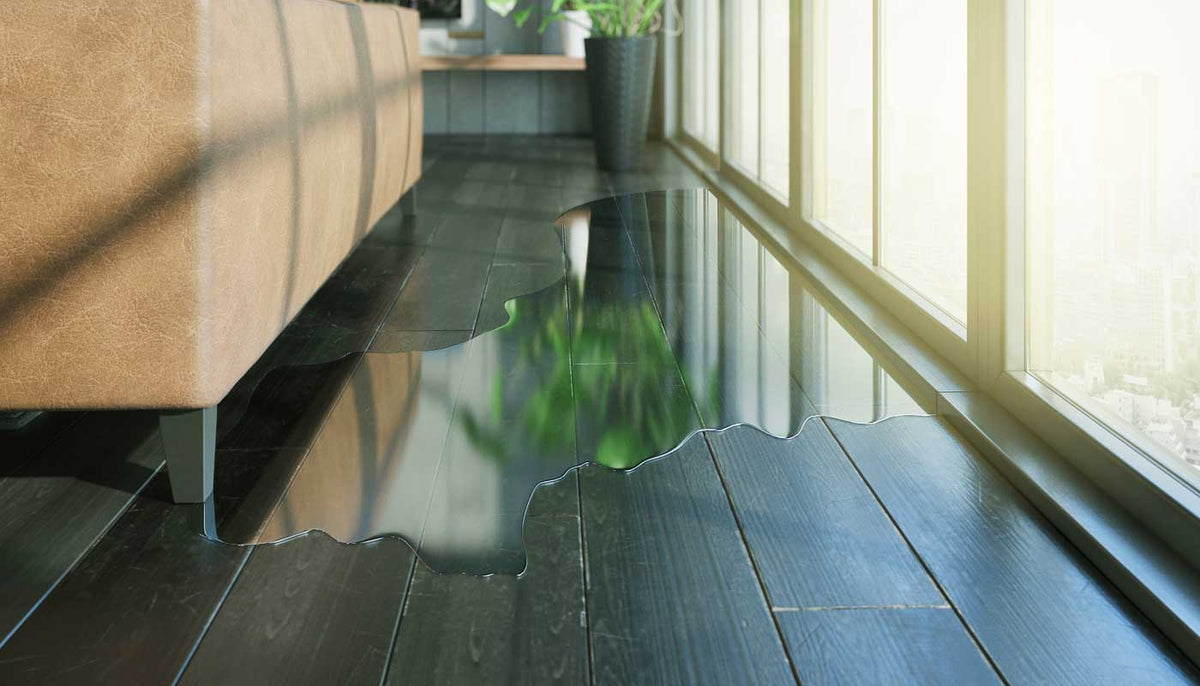
4 Tips on How to Recover Your Water-Damaged Floor
|
|
Time to read 3 min
|
|
Time to read 3 min
No one wants a water-damaged floor, but in many cases, it can’t be helped. Over time, invisible leaks, added humidity or seeping groundwater can make even durable, waterproofed floors give way.
If you suspect water damage to your floor, here’s what you need to do:
If you’ve experienced flooding, leaks or any water incident, you need to check your floor for signs of damage. Damage to hardwood floors is the easiest to spot. Wooden floors may show peaking, buckling, cupping and discoloration.
The most common sign of floor moisture in hardwood floors is cupping. The board edges curl upward, leaving the midsection with a slight dip. In addition:
Moisture isn’t a laminate floor’s friend. While it is considered more durable than hardwood floors and vinyl flooring, laminate floors give way when exposed to water or moisture.
Common indicators of water damage to laminate floors:
Tiles, especially those constantly getting wet (ex. bathroom tiles) also get damaged over time. Water can infiltrate the grout cracks and affect the subfloor beneath the tiles. This can cause the tiles to move and detach from the subfloor. Signs of tile floor damage include:
Vinyl flooring is waterproof but it’s still susceptible to damages due to flooding or extreme moisture. Water-damaged vinyl floors may appear:
Before doing repairs, you must eliminate the source to keep your new floor from getting waterlogged the next time. Excess moisture can come from:
Clean water leaks are safe to clean and with basic plumbing know-how, you can manage the leaks by yourself. Contaminated water leaks, however, need extra care. You can hire experts (ex. general contractors or plumbers) to get the leaks cleaned up and repaired safely.
Usually it’s best to have professionals perform both the cleanup and repair. However, you may do this by yourself.
Step 1. Remove the surface water. Use a shop vacuum to remove as much water as you can from the floor’s surface. Using a sponge/squeegee may also help, but don’t forget to wear a pair of rubber gloves!
Step 2. Clean the floor. Mix your preferred detergent with a mild disinfectant. Using a stiff brush, scrub the entire floor with the solution. Make sure to scrub away dirt, grime, silt or any organic material from the floor. If there’s mold, treat the affected area with trisodium phosphate.
Step 3. Let it dry. Allow the floor to dry naturally. Open the doors and the windows to maximize airflow.
The decision to repair or replace your water-damaged floor is entirely up to you. Light damages will only need repair, but floors with extensive and obvious damage will need replacement.
Simply screw or nail boards that appear slightly lifted back into place, but remove the water-damaged floor planks. Using a saw, cut the damaged floor planks. Lift the damaged section and remove it with a pry bar. Next, nail the new boards to the floor. Before staining, sand the old and the replacement boards so they match. Apply stain and a polyurethane finish.
Water-damaged laminate boards show signs of swelling and separation. In this case, you may replace the damaged boards individually. However, in the case of extensive water damage (ex. flood), the usual option is to replace the whole floor.
Make sure the floor is dry before attempting to replace or repair buckling on your vinyl floor. Cut out the damaged vinyl then pry it off the floor using a screwdriver. You can replace the damaged part or reuse the vinyl.
Depending on the extent of water damage, you can choose to do the repairs by yourself or you can hire general contractors to do them for you.
If you have the time and if there are minimal issues, you can save money by doing the repairs on your own. However, if your floor was exposed to water for long and if there’s visible mold infestation or decay, it’s better to leave this to the experts for the best outcome.